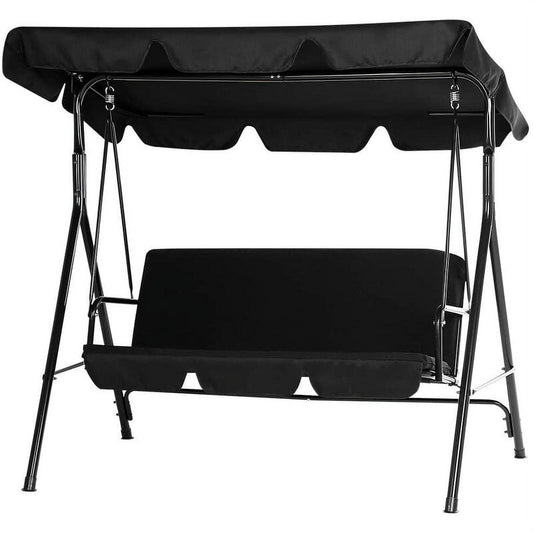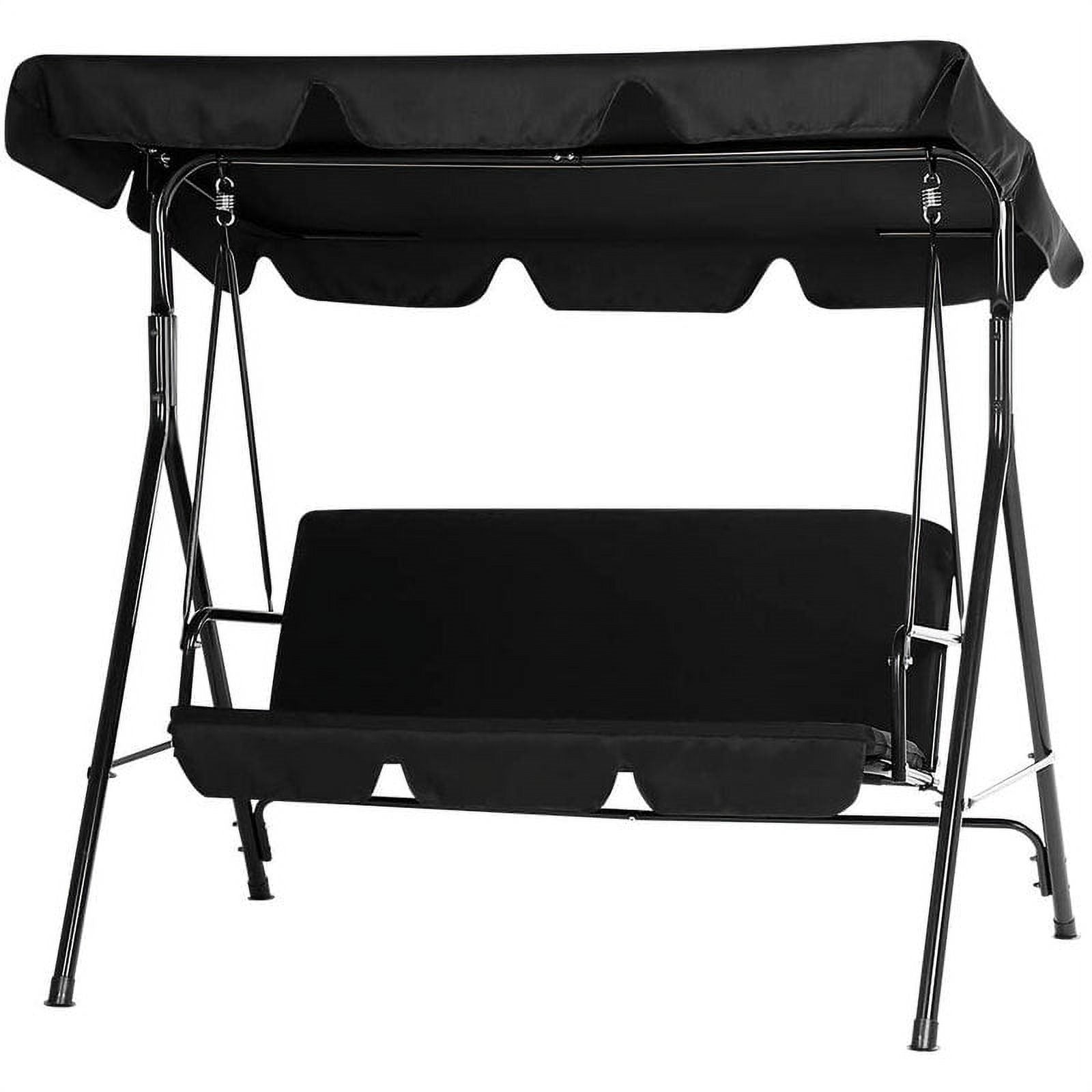Not all shade solutions are created equal. When it comes to enhancing your patio, deck, or garden, the choice between a porch awning and a portable canopy can feel confusing. Both offer sun protection and extra comfort, but they serve different needs.
A porch awning is usually fixed or retractable, giving your home a permanent or semi-permanent outdoor extension. On the other hand, a retractable patio canopy, free standing awning, or portable awning offers flexibility—great for renters, party hosts, or seasonal use.
So how do you decide which option works best for you? In this guide, we’ll compare the key features, benefits, and differences between awnings and canopies. Whether you're looking to create a cozy outdoor awning setup for weekend brunches or need quick shade for backyard events, we’ll help you find the right fit for your space, budget, and lifestyle.

What Is an Awning? Key Features and Benefits
Awnings have been used for centuries, and for good reason—they’re simple, effective, and stylish. Attached directly to a building or frame, an awning offers reliable, structured shade that blends into your home’s exterior.
1. Types of Awnings: Retractable, Fixed, and Adjustable
There’s no one-size-fits-all when it comes to awnings. You’ll find several types, each suited to different needs:
①Fixed Awnings: These stay in place year-round. Perfect for permanent shade over patios, doors, or windows. Great if you're looking for a stable porch awning that can handle wind and rain.
②Retractable Awnings: These can be extended or rolled back, usually using a crank or motor. A popular style of retractable patio canopy, they’re ideal for changing weather—shade when you need it, sunlight when you don’t.
③Adjustable Awnings: These offer flexibility in angle and coverage. An adjustable awning lets you fine-tune the shade based on sun direction, perfect for patios with shifting sunlight.
2. Where Awnings Work Best
Awnings are a great choice for homes with defined patio areas, windows that overheat in summer, or entryways that need protection from rain. A well-placed porch awning adds both comfort and curb appeal.
You’ll commonly see awnings used in these locations:
- Over backyard decks or balconies
- Above windows to reduce indoor heat
- Along side doors to keep entryways dry
- As a permanent extension of the living space
A major advantage is that awnings blend seamlessly into your home’s structure. They offer a more polished look than most portable awning options, which are better for temporary needs.
Awning Style Comparison Chart
|
Awning Type |
Installation |
Flexibility |
Best For |
|
Fixed Awning |
Permanent |
Low |
Long-term shade, wind resistance |
|
Retractable Awning |
Semi-fixed |
High |
Changing weather, sunny patios |
|
Adjustable Awning |
Semi-fixed |
Very High |
Directional shade, daily use |
Awnings also work well in smaller yards where space is limited. Since they attach to walls or roofs, they don’t take up ground space like free standing awnings or canopies do.
In addition, most outdoor awnings are built from weather-resistant fabrics like acrylic or polyester, supported by aluminum or steel frames. With proper care, they can last for years with minimal maintenance.

Now that you understand how awnings function and when they shine, let’s take a look at their more mobile counterpart—the canopy. If flexibility, portability, or event use is your priority, you might find a better fit in the next section.
If you're seeking a compact and stylish shade solution for your patio or balcony, the YODOLLA 8.2' x 6.5' Manual Retractable Awning is an excellent choice. Featuring a durable, water-resistant polyester canopy and a rust-resistant aluminum frame, this awning offers reliable protection against sun and light rain. Its manual crank system allows for easy adjustment, providing customizable shade to suit your outdoor comfort needs.
What Is a Canopy? Key Features and Benefits
While awnings attach to buildings, canopies are all about flexibility. They’re freestanding, easy to move, and come in various shapes and sizes. Whether you're hosting a backyard BBQ, setting up a market stall, or needing quick shade at the beach, a portable awning or canopy offers fast, versatile coverage.
1. Types of Canopies: Portable, Pop-up, and Free Standing
Here are the most common types you’ll find in the market:
①Portable Canopies: Lightweight and easy to transport, these are perfect for people who want shade only when needed. Most portable awnings can be folded down and stored in a carrying bag.
②Pop-up Canopies: A popular sub-type of portable canopy, these can be set up in minutes without tools. Great for temporary events, yard sales, or even emergency shade at home.
③Free Standing Awnings: These are more robust and typically larger. A free standing awning has its own support frame and often includes adjustable arms or tilt options. While not attached to any wall, they offer a more permanent feel than a simple canopy tent.
2. Use Scenarios: Events, Yards, and Flexible Shade Needs
Canopies shine in situations where flexibility is key. They’re not just for events—you’ll find many homeowners using canopies as seasonal shade over patios, play areas, or garden furniture.
Here are a few ideal uses:
- Weekend family gatherings in the backyard
- Farmers markets, fairs, and camping trips
- Temporary shelter for tools or pets
- Supplementary shade for outdoor seating
Because canopies don’t require drilling or permanent installation, they’re perfect for renters or homeowners who can’t alter their property. Some models even come with removable sidewalls or mosquito netting for added comfort.
Awning vs Canopy: Quick Style Overview
|
Feature |
Awning |
Canopy |
|
Attached to structure |
Yes |
No |
|
Portable |
Limited |
High |
|
Installation |
Moderate to permanent |
Quick and temporary |
|
Best Use |
Home patios, windows |
Events, flexible spaces |
|
Common Types |
Porch awning, adjustable awning |
Free standing awning, portable awning |
Need wide, adjustable shade for your patio? The YODOLLA 13x8' retractable awning delivers solid coverage with a clean, no-fuss design—easy to crank out when the sun hits and just as easy to tuck away.

Awning vs Canopy-Key Differences
Still wondering whether an outdoor awning or a canopy fits your lifestyle better? Let’s look at the direct differences in terms of structure, function, and durability.
1. Structure, Mobility, and Mounting
The biggest difference lies in how they’re built and used.
①Awnings are mounted to a building or frame, often requiring some level of installation. You’ll see them on porches, above windows, or attached to decks. Once installed, they stay put.
②Canopies are freestanding. They sit on their own legs and can be moved wherever needed. This gives you the freedom to adapt to changing weather or rearrange your space for different occasions.
If you need consistent shade in one fixed area, a porch awning or adjustable awning is a strong choice. But if you want something that goes where you go, a portable awning or retractable patio canopy is your best bet.
2. Durability and Weather Resistance
Awnings are generally built for long-term use. High-quality outdoor awnings come with rust-resistant frames, UV-blocking fabrics, and weather-sealed joints. They're designed to stay outside through multiple seasons with minimal wear.
Canopies, especially lightweight pop-ups, tend to have thinner fabric and less sturdy support. While they’re great for fair weather, they’re not built to withstand high wind or heavy rain. That said, free standing awnings—especially those made for patios—can be surprisingly robust if you choose a quality frame and fabric.
Note: Always check wind ratings and fabric material before purchase—especially for large, freestanding structures.
Choosing between the two isn’t about which is better—it’s about which is better for you. Your space, lifestyle, and usage habits should drive your decision. And that’s exactly what we’ll dive into next.
How to Choose the Right Shade Solution for Your Outdoor Space
Choosing between an awning and a canopy isn’t about which one is “better”—it’s about which one fits you. Your space, lifestyle, and how you plan to use the shade all matter.
1. Consider Your Space, Use, and Lifestyle
Start by thinking about how permanent you want your shade to be. If you're looking for long-term protection that blends into your home, a porch awning or adjustable awning is a great fit. It works well over decks, balconies, or sliding glass doors where daily shade is needed.
But if you need shade that moves with you—say, to cover a picnic area one weekend and a driveway the next—a portable awning or free standing awning is your best bet. These are especially popular with families, renters, and people who host backyard events often.
Your lifestyle also matters. If you enjoy quick setups and low commitment, you’ll love the ease of a retractable patio canopy or pop-up canopy. If you want something you can “set and forget,” a fixed outdoor awning is worth the investment.
2. Budget and Maintenance Needs
Budget is another deciding factor. A basic portable awning can cost far less than a professionally installed porch awning—sometimes by hundreds of dollars. Canopies also don’t usually require permits, installation fees, or tools.
However, you get what you pay for. A higher-end adjustable awning may last for 10+ years with minimal upkeep, while a cheap canopy might wear out in just a few seasons.
Maintenance-wise, awnings usually require occasional fabric cleaning and hinge lubrication. Canopies may need more frequent storage, folding, or weather protection, especially in rainy or windy climates.
Installation Considerations-Awning or Canopy?
Once you know what type of shade you want, it’s time to think about setup. Some options take minutes to put together, while others may require tools—or a professional.
1. DIY vs Professional Installation
Most portable awnings, retractable patio canopies, and pop-up tents can be installed by one or two people in under 30 minutes. No drilling. No stress.
But a wall-mounted outdoor awning, especially a larger model with adjustable arms, may need to be installed by a contractor—especially if it's going into brick or stucco. Some come with detailed instructions for confident DIYers, but if you're unsure, paying for professional help is a smart move.
2. Permit, Space, and Attachment Requirements
For permanent porch awnings, especially those larger than 10 feet, you might need local permits or HOA approval. Always check with your city or neighborhood guidelines before mounting anything to your home’s exterior.
Also measure your space carefully:
- Do you have enough wall area for brackets?
- Is there overhead clearance for full extension?
- Is the ground surface level enough for a free standing awning?

If your space is tight or uneven, a retractable patio canopy or adjustable awning can be a flexible solution, letting you adapt the coverage without a full remodel.
For a versatile and stylish shade solution, the YODOLLA 3x1.8m DIY Free Standing Awning in dark grey is an excellent choice. Its freestanding design allows for flexible placement in various outdoor settings, providing reliable protection from the sun. The durable materials and sleek appearance make it a practical addition to your patio, garden, or any outdoor space.
Conclusion: The Right Shade Solution Starts with the Right Questions
Choosing between a porch awning and a portable canopy comes down to understanding your space, how often you’ll use it, and what level of flexibility you need. A fixed outdoor awning offers long-term comfort and blends seamlessly with your home, while a retractable patio canopy or free standing awning brings versatility for changing needs.
If you're looking for something permanent with minimal setup, an adjustable awning might be the best fit. If you want to set up shade wherever and whenever you like, a portable awning could be your go-to.
Either way, think beyond just the product—consider the installation, maintenance, and how you want to use your outdoor space every day. With the right setup, you’re not just adding shade—you’re expanding the way you enjoy your home.
Still deciding? Take measurements, compare models, and start small if you’re unsure. The perfect shade solution is one that works for you.

















